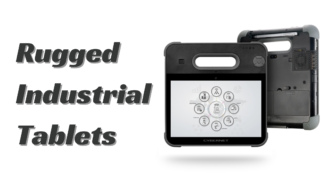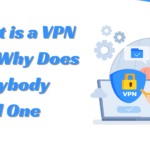Seven Essential Factors to Take into Consideration When Developing Logistics Applications
- 1 What is the Logistics Tracking App?
- 2 The Significance of Applications in Logistics
- 2.1 1. Improved customer service
- 2.2 2. Provides Security
- 2.3 3. Continued Concentration
- 2.4 4. Etiquette of a Professional Nature
- 2.5 5. Reduced expenses
- 2.6 6. Decreases the amount of paperwork
- 3 Seven Essential Considerations for Logistics App Development
- 3.1 Customer Application
- 3.2 1. Simple Registration/Sign-Up
- 3.3 2. Easy Navigation of the Application
- 3.4 3. Reservations
- 3.5 4. Delivery Schedule
- 3.6 5. Simple Payments
- 3.7 6. Search for Location
- 3.8 7. Reviews and Ratings
- 4 Driver’s License Application
- 4.1 1. Requests for Orders
- 4.2 2. Orientation
- 4.3 3. Navigation of the Route
- 4.4 4. Disbursements
- 4.5 5. Bill Approvals
- 4.6 6. Order Specifics
- 5 Admin Panel
- 5.1 1. Dashboard
- 5.2 2. Driver Management
- 5.3 3. Fleet Management
- 5.4 4. Tariffs and Bills
- 5.5 5. Push Notification
- 6 DESCRIPTION
- 7 PROGRAMMING
- 8 In conclusion
It must be delightful to contemplate the expansion of your enterprise. Each day, you are required to execute numerous deliveries, orders, and dispatches. However, have you ever considered the possibility of independently monitoring inventory, payments, shipping, and customers? You may employ a substantial task force; however, the cost of coordination and communication among various individuals will be substantial, as well as the associated noise pollution.
The coordination of objects is not a component of management. Effective and efficient coordination is the hallmark of management. The same could be achieved by utilizing a logistics application.
In recent years, there has been a significant increase in the popularity of on-demand delivery applications as a result of users’ preference for residential services. The logistics monitoring program is becoming increasingly popular among business investors due to its ability to facilitate delivery. According to Marketwatch, the global logistics market is anticipated to expand by $287.1 million over the next five years (2020-2024).
Logistics is a straightforward method of organizing the transportation, inventory, and shipment of your products in a predetermined format. The logistics objective is to inform the business proprietor of the demand and supply of products stored in the warehouse, as the figures are subject to change in accordance with consumer orders.
Mobile app development in Houston is the process of creating software applications for smartphones and tablets in the city of Houston.
What is the Logistics Tracking App?
The military is the source of the term “logistics.” It denotes the systematic transfer of apparatus and supplies from one location to another.
The utility that consolidates the record of your deliveries, payments, and orders is known as the logistics monitoring app. It optimizes your resources to achieve the highest possible output with the least amount of effort. The logistics application is not only appropriate for on-demand delivery applications, but it is also equally effective for transportation, warehousing, vehicle logistics, and a variety of other applications.
A logistics application is any application that maintains a record of your resources and optimizes them for optimal productivity. The use of logistics applications is not limited to business proprietors. It is equally beneficial for the end-users and intermediaries, as we will discover in a subsequent section.
The Significance of Applications in Logistics
In the delivery, transportation, or warehouse industries, it is imperative to maintain a consistent awareness of the activities that are being conducted. These activities are directly related to chain and supply management, regardless of whether you engage in stock trading.
The successful business proprietor should be aware of the demand for their services, the action plan, and the impact of their services on revenue. The logistics tracking program maintains a comprehensive record of all of this without any significant difficulty, 24 hours a day.
1. Improved customer service
Your customers’ orders can be promptly tended to with an on-demand logistics application. This enhances customer satisfaction. The consumer can easily access their order by monitoring it. Additionally, they have the option to communicate or reschedule delivery at their discretion if they are unable to receive the order/parcel.
The logistics monitoring app would enable you to manage all on-demand customer requirements without disrupting the entire process chain.
2. Provides Security
The fear of unsuccessful deliveries is prevalent in on-demand delivery applications. Customers are unwilling to acquire products or services from a brand that fails to specify the delivery details.
The transport and logistics application enables you to exchange information regarding the route, order ID, and anticipated arrival time. This ensures customer satisfaction and increases the likelihood of them utilizing your product and service more frequently.
3. Continued Concentration
According to a survey conducted by medium.com, over 57% of individuals utilize mobile devices for business operations, and on-demand logistics applications are highly beneficial. The business proprietor can maintain a consistent awareness of the current events in the business with their assistance.
The logistics monitoring software provides a comprehensive overview of the requested orders, attended requests, payments, shipment process, and revenues on a single platform. This instils confidence in the business owner’s product or service.
4. Etiquette of a Professional Nature
The logistics application development is conducted not only to enhance business operations but also to add professionalism and symmetry to the business. The logistics monitoring program provides a consistent update on the activities that are currently in operation.
Also, from the customer’s perspective, when they receive comprehensive information regarding their order, its cargo, and the anticipated arrival time. It demonstrates the efficacy of your organization. The consumers are given the impression that the company is professional due to its consistent effectiveness and efficiency.
Nearshore mobile app development in Mexico adheres to the country’s skilled talent pool and solid technological underbuilding to deliver tailored mobile app solutions for businesses seeking cost-effective and efficient development partnerships.
5. Reduced expenses
A tumultuous process is transit and delivery. To ensure the seamless operation of the system, it is necessary to have a number of individuals serve as intermediaries between the consumer and the merchant. This frequently results in disorder and necessitates a substantial number of individuals to execute the task efficiently.
By employing the logistics tracking application, you eliminate the intermediary. This maintains the clarity of communication and saves you a significant amount of money.
6. Decreases the amount of paperwork
Transition to an environmentally friendly business model. Time is saved, as well as the tedious process of journaling. In logistics applications, it is possible to monitor invoices, payment statements, and order records online. It is unnecessary to transfer all written content onto the paper. All of this is accomplished automatically by the logistics monitoring application.
In addition to monitoring, the logistics app development is conducted to meet the requirements of the business and industry, which encompasses numerous transactions and equipment relocations. It is not necessarily limited to the culinary and retail sectors. Nevertheless, there is a surge in demand for on-demand food delivery applications. However, logistics applications are also in high demand in the following industries:
Seven Essential Considerations for Logistics App Development
The logistics market has a significant potential for development, with a potential of up to 95 billion US dollars between 2020 and 2024, as per Technavio.
Currently, we are aware of the expanding scope of logistics app development. Let us explore some of the critical factors that should be taken into account when creating logistics applications.
The following are four categories into which these items could be categorized:
- Usability and Control
- Characteristics
- Growth
- The cost
- USABILITY AND CONTROL
Under the initial pointer of control and usability, the following are the primary topics.
Customer Application
The customer interface should contain all the features that provide the consumer with information about the products and the process of submitting an order. The interface must be capable of providing the user with the necessary guidance to navigate the product or service. How do you proceed with the booking, payment, and monitoring? It should also provide the consumer with the option to reschedule the delivery date and time.
To incorporate all of those above into the panel. The following are the sub-features that are necessary for the development of a logistics application.
Mobile App Development Services In Ohio harness local brilliance and industry expertise to come across customized solutions that address incomparable business challenges, ensuring robust application performance while prioritizing user experience and scalability in an ever-evolving digital landscape.
1. Simple Registration/Sign-Up
The consumer should be able to enter into the application effortlessly. The process of manually filling in details should not be excessively protracted, even to sign up. The individual should be able to readily register by providing their email address, phone number, or social media platform. Additionally, this data must be preserved in order to ensure that the user is immediately directed to the app’s primary page upon logging in in the future.
2. Easy Navigation of the Application
The user experience of the application should be user-friendly. The graphics and feature placement must be designed in a manner that prevents the user from becoming perplexed about the app’s location and navigation.
3. Reservations
Upon reviewing the application, the user should be able to view the product’s specifications, which will facilitate the booking process. The ID and product description of the order that was submitted should be provided to the consumer for their convenience.
4. Delivery Schedule
The user should be able to organize their schedule after the booking has been completed. He has the authority to determine the location and provide specifics, such as whether it is a residential or commercial space, in order to determine the delivery times. Additionally, the ability to reschedule delivery is a significant advantage.
5. Simple Payments
The likelihood of receiving additional business orders is increased by offering customers convenient payment options. The consumer will save time by eliminating the need for manual card populating details resulting from the development of a mobile wallet for logistics applications.
6. Search for Location
The application should be capable of accurately determining the user’s geographic location. The program should be able to determine the user’s location by utilizing GPS mapping or geofencing. This enables the user and the brand to narrow down the search results by considering the most viable locations in the vicinity.
7. Reviews and Ratings
Individuals prioritize applications that prioritize their user experience. Enable feedback and rating features to enable your customers to share their purchasing experiences with you. This lends credibility to your application.
Driver’s License Application
The chauffeur serves as the intermediary between you and the consumer. Establish a multifunctional smart panel as the foundation of this bridge to ensure its stability. This panel is of paramount significance for applications that facilitate on-demand delivery. Opt for an application development company that offers intelligent responses to all of the driver’s inquiries. This will enhance the professionalism of your business and facilitate the delivery process.
During the development of the driver interface for the logistics app, the following sub-features should be considered.
1. Requests for Orders
The interface should be capable of informing the chauffeurs of consumers’ requests based on their geographical location. The chauffeur must be able to approve or decline the order request with ease.
2. Orientation
Like an attendance document, the couriers should be able to indicate their availability to accept orders or their attendance readily. They are able to display their status online when they are prepared to receive an order request and ignore the notifications when they are inactive.
3. Navigation of the Route
Empower the application with a GPS incorporation system that gives the customer the shortest route, is traffic-free, and has the correct address. It conserves their time and effort in determining the location.
4. Disbursements
Implement an integrated payment system that enables users to take the payment provided by consumers during the order delivery process. Additionally, this will enable you to monitor payments and identify any unethical practices.
5. Bill Approvals
The driver interface should include a bill confirmation feature that enables drivers to submit their bills and request reimbursements for events that occurred during the delivery of the order. It may pertain to gasoline expenses, toll taxes, and numerous other matters.
An Offshore Mobile App Development Company satisfies businesses with access to a global talent pool. These vital, cost-effective development solutions combine experimental design, resourceful coding practices, and rigorous quality assurance, all tailored to meet specific project requirements while maintaining effective communication and collaboration across time zones.
6. Order Specifics
Maintain a section in the driver interface of logistics applications that enables them to access information regarding the order they are currently attending effortlessly. Information such as the scheduled date, location of delivery, payment status, total bill amount, and Order ID.
Admin Panel
Any business is founded upon the administrative framework. As the proprietor, you must be aware of the location of your orders, their shipment, warehousing, and revenues. Manage all of this through the development of a mobile app for logistics, which includes an administrative interface. The following are the subfeatures that should be listed under it.
1. Dashboard
The proprietor should have simple access to all information related to the warehouse, submitted orders, and orders dispatched from the interface of the panel.
2. Driver Management
With this function, the administrator will have the ability to monitor the chauffeurs who have registered with the application. What is the number of orders they have fulfilled, what are their customer ratings and feedback, and a variety of other details?
3. Fleet Management
When developing logistics applications, it is crucial to take this feature into account. Under this, the administrator is granted access to the status of the dispatched orders. This allows him to retrieve information regarding any of the orders in the event that he needs to inquire about them.
4. Tariffs and Bills
The app should also incorporate the ledger of invoices and payments. It assists the administrator in maintaining a comprehensive record of all transactions that occurred in relation to the business and the intermediaries involved.
5. Push Notification
The administrator is granted the ability to distribute particular messages and notifications to transporters, intermediaries, and users through this feature. The communications regarding promotions, discounts, or any new introductory launches. It is possible to modify and transmit all of this information to the appropriate parties via SMS notifications.
DESCRIPTION
An additional feature
A few additional features are never a bad thing. Increasing the number of features in your application would only serve to enhance its user experience and distinctiveness.
Chat options may be implemented. The customer and chauffeur, as well as the customer or shipping authority, may engage in conversation. They may discuss particular preferences or requirements regarding delivery convenience.
The additional feature that you may implement is the ability to display your application in multiple languages in accordance with the language of various regions or countries.
Consequently, the incorporation of additional features will serve as a unique selling proposition (USP) for your logistics application.
PROGRAMMING
1. Front-end development
When it comes to the development of mobile applications for logistics, it is crucial to select a mobile app development company that is capable of meeting your needs.
The mobile app development company should employ a project manager who is proficient in comprehending your needs. An intellectual and creative designer should be responsible for creating user interfaces that maintain audience engagement, as the user experience is of significant importance.
It is crucial to seek out developers who can transform your concept into reality through the use of intelligent displays and programming.
2. Development of the back end
The backbone of any mobile application development is the backend development. Select a mobile app development company that has a strong background in the backend that you intend to use to design your app.
Your app is coded by the backend developers, who transform your vision into a wise reality. Attempt to establish intelligent back-end developers who can effortlessly integrate numerous features into a single application.
Labackende evaluators ensure that there are no errors. They verify and execute your application through numerous processes to guarantee its seamless operation.
Cost of Development
The most critical aspect of logistics app development is the cost estimation. The cost of an application is contingent upon the features that you wish to incorporate or eliminate.
The cost pricing of the program also varies depending on its nature. This implies that the costs of on-demand delivery applications for food and fleet management will be distinct.
In conclusion
Although WhiteHatJr is challenging this conventional wisdom, developing logistics applications is not an easy task. However, in the context of logistic app development, it is imperative to prioritize three factors: budget, purpose, and necessity.
Engage in introspection regarding the objective of your application. What features are you seeking, and what is your budget for them?

















